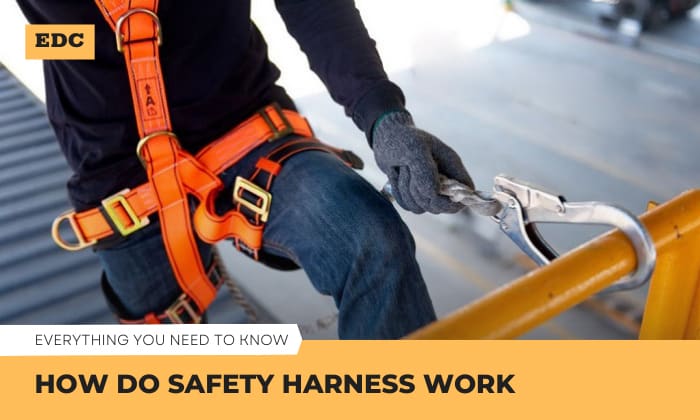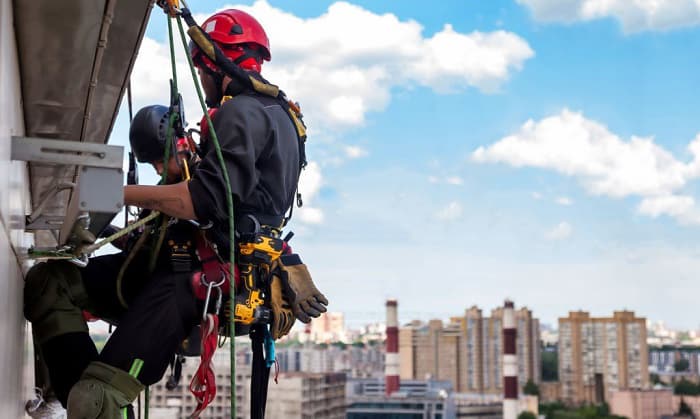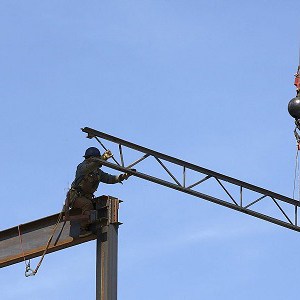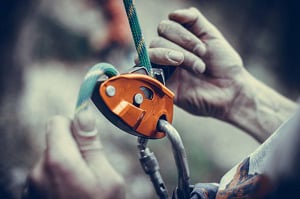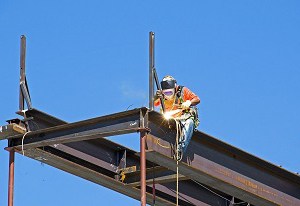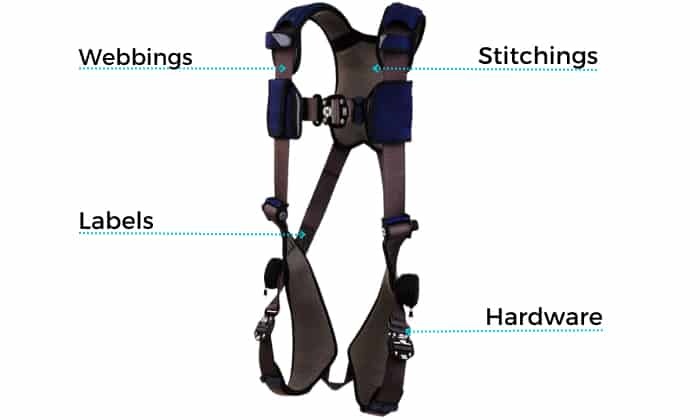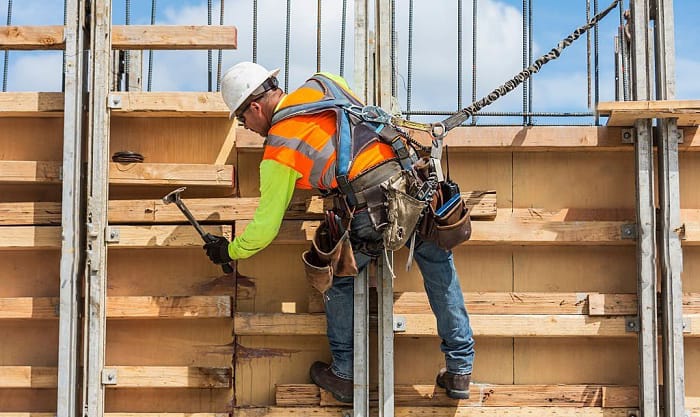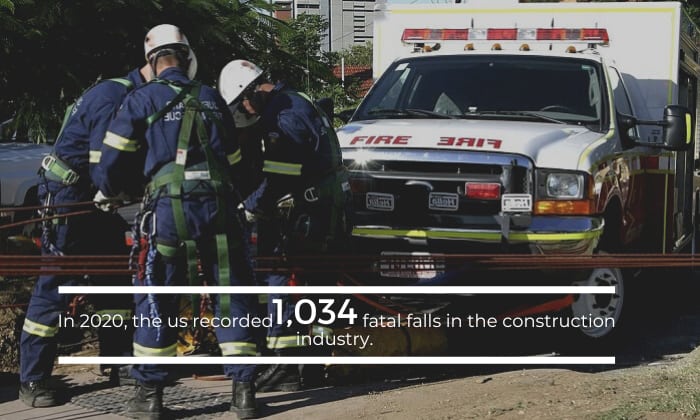A safety harness works together with an anchor and a connector to prevent falling accidents. These three pieces of equipment are the key components of a “PFAS” or personal fall arrest system.
Falls from heights are among the most common causes of work-related fatalities. This explains why OSHA discourages employers from deploying workers to elevated surfaces without fall protection systems.
Thus, workers should be equipped with PFAS and learn how do safety harnesses work to properly protect themselves.
Table of Contents
What is a Safety Harness?
A safety harness is a piece of personal protective equipment made of several straps and buckles.
Workers wear harnesses to attach themselves to a stationary object to keep them from crashing onto the ground. Every safety harness for work has a unique design to meet the safety requirements of specific jobs and project sites.
Here are the different types of safety harnesses based on application:
1. General fall arrest harness
With one dorsal attachment between the shoulder blades, these harnesses keep the user protected during and after the fall. However, they are not recommended for prolonged suspension, work positioning, rescues, and controlled descent.
2. Work positioning harness
As part of the whole work positioning system, this safety harness for roof workers, construction workers, and linemen enables them to work on elevated workstations like walls and roofs thanks to the D-rings at the hips. Moreover, it can serve as a backup fall arrester.
As part of the work positioning system, this harness supports and holds the user in place while working on an elevated workstation, like poles and walls. Moreover, it can also be used as a backup fall arrester.
3. Ladder climbing harness
Equipped with a sternal (front) D-ring, these harnesses used for climbing up and down the ladder and are included in ladder-climbing systems.
4. Descent control harness
With multiple frontal attachment points, these harnesses connect to the rest of the controlled descent devices, enabling workers to lower themselves safely from slopes or vertical structures.
5. Rescue or limited access harness
Commonly used for rescue missions, these harnesses help in lowering or raising emergency responders to get in and out of confined spaces or from heights. For better support and positioning, they feature attachment points around the shoulder straps.
6. Seat
The seat component is the most defining feature of suspension harnesses. While in suspension, this component lets the user sit comfortably for extended periods.
7. Welding harness
This specialized safety harness uses fire-retardant webbings like Nomex and Kevlar and grounding material to protect them against arch flash exposure.
Parts of a Safety Harness
Workers and safety officers perform a regular safety harness inspection, looking at every piece that makes up the equipment:
1. Webbings
The webbing is any strap or fabric material in a full-body harness. These straps hold the user’s shoulders, chest, legs, and back.
2. Stitchings
The stitchings attach the webbings, which can be found at the back, chest, leg, and shoulder straps.
3. Hardware
The harness’ hardware is the metal parts such as buckles, carabiners, D-rings, and snap hooks.
4. Labels
Labels, or “tags,” indicate the manufacturer, warnings, model number, date of manufacture, and other vital information that needs to be checked during the inspection.
How Does It Work?
Back in the 70s, workers only used body belts fall protection, but it resulted in catastrophes. Like modern-day harnesses, the belts are attached to immovable objects, but many workers have slipped through them due to the arresting force.
Even if the belts successfully arrested the fall, some suffocated when the belts shifted toward the armpits. Others suffered from severe or fatal injuries after being suspended for extended periods or falling “incorrectly.”
With these problems in mind, manufacturers designed full-body safety harnesses that achieve the following:
1. Distribute the weight and force to safeguard vital organs
The deadly consequences cited above are because belts direct the arresting force to the waist. To address this, manufacturers distributed the body’s weight more evenly by placing the straps around the user’s lower and upper body.
In doing so, the straps and buckles also redirect the force to the chest, shoulders, pelvis, and muscles on the upper thighs, which can best handle it in the event of a fall. Simultaneously, the force is diverted away from the neck, the stomach, and the groin, which are deemed sensitive.
2. Keep the user upright
Since the safety harness with fall arrester supports both the upper and lower body, the user can remain in a vertical posture so they can work. Moreover, this posture enables the deceleration device to minimize the acceleration rate during falls, and it puts them in a position where their bodies can absorb the force safely.
The Importance of Safety Harness
In 2020, the US recorded 1,034 fatal falls in the construction industry. Research shows that these deaths resulted from violating the OSHA’s (Occupational Safety and Health Administration) guidelines on fall arrest systems.
To put things into perspective, statistics suggest that falls from height account for a large percentage of occupational deaths – this highlights how important it is to use PFAS.
But for a PPE harness to do its job, a worker must ensure that it fits properly and is worn correctly. An ill-fitting harness can cause harm. For instance, if the chest strap is too high, it can move up to the chin and choke the user after the fall.
Frequently Asked Questions
1. How long can you survive in a safety harness?
Safety harnesses are indeed life-saving, but the fallen worker must be retrieved within 5 minutes or less.
Otherwise, the individual may suffer from suspension trauma and experience symptoms like sweating, shortness of breath, light-headedness, weakness, numbing of legs, and blurred vision, which leads to fainting.
Here’s why: In a vertical posture, the user’s blood will travel toward the legs, increasing the heart rate to ensure continuous blood flow to the brain. If this no longer works, the heart will slow down and may eventually stop.
2. What is the difference between a safety belt and a safety harness?
A safety belt or body belt is worn around the waist to help a worker position themselves.
On the other hand, a full-body harness is worn around the upper torso, buttocks, and thighs. Depending on the design, a worker can use a safety harness to access tight spaces or work on a tall vertical surface.
3. How does a body harness minimize force on the body?
A body harness limits the arresting force to 1800 lbs. As explained earlier, this force is reduced by being distributed throughout the torso and the thighs.
However, using a shock-absorbing lanyard as a connecting device can further minimize the force from a 6-foot drop to at least 900 lbs.
4. What are the safety requirements when using harnesses?
The rules vary depending on whether the worker is on a roof, a scaffold, or a cave.
For instance, the minimum height to wear safety harness is 6 feet or more if the construction worker does not have guardrails and safety net systems. However, workers must wear a harness when working with scaffolding without handrails, regardless of its height.
In a similar vein, employees working near hazardous machinery are expected to wear a safety harness at all times, no matter how close they are to the ground. This is to minimize the risks of them falling into dangerous equipment.
Conclusion
Before we end, here’s a friendly reminder: This article only answers the question that many of our readers asked: How do safety harnesses work? Our goal is to educate you about this device as well as its benefits and risks.
Because fall protection systems come in various shapes and sizes, only a qualified safety officer who assesses your workplace can give you recommendations and training on how to use it properly.

Veronica is our content editor. She is a talent in delivery. Her main work is editing and writing articles that are both informative and simple to follow. She is in charge of synthesizing our understanding of what personal protection equipment (PPE) is needed in each job, how to best apply it, and how to visualize that equipment.


